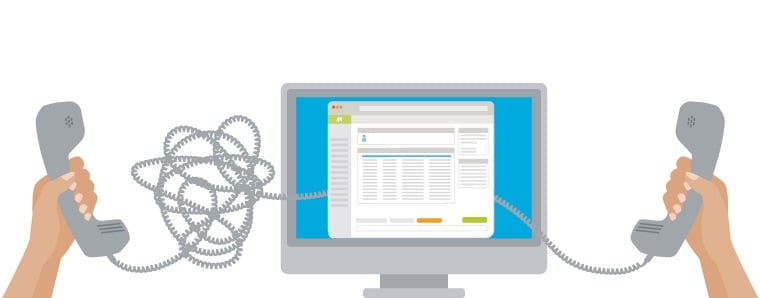Do you still send an email if you need something urgent? Surely a text is faster. But will that reduce the gravitas of a situation? Maybe a call would be better—but will that be too forward and intrusive?
What we definitely need, given all our channels today, is a handy reference that provides a better understanding of when each platform should be used. Below are the new rules for internal office communication in 2018.
When to use email
Today’s tech-savvy generation prefers to coordinate via email. The key thing to remember about email, however, is that it’s a form of one-way communication. As easy as it is to shoot an email to ensure you have a soft copy trail of your exchange that can be referenced, keep in mind that it doesn’t facilitate real-time exchange of ideas.
That said, it’s best used when you:
- Want to provide directional information that doesn’t require an immediate response.
- Have to ensure that you keep a record of your communication.
- Want to share detailed information.
- Intend to point the recipient to additional online sources of information.
- Want to offer official work-related status updates.
When NOT to use email
Common workplace culture now considers round-the-clock access to email disruptive to work/ life balance. As such, most consider email today as something that will be reviewed only during business hours. Anything sent past end-of-day will be relegated for tomorrow’s to-do list.
Avoid sending an email if:
- It’s already late in the evening and it’s past business hours. Or if you do, assume that you won’t get a reply until the start of the next business day.
- You want something answered immediately.
- Your message requires context and nuance that can’t be communicated clearly and might leave room for misinterpretation.
When to use text messaging
Texting suffers from the reputation of being too informal. (Especially when you use your own personal number to contact clients and coworkers). Yet, that hasn’t stopped companies from using texting in business communication—especially when you need an instant reply. In fact, in the US alone, statistics show that eight billion personal and professional text messages are sent daily.
With text messages, you can assume that any message you send is received in real-time. In fact, 90 percent of text messages sent are read within the next 3 minutes after they are sent. This makes it great for:
- Quick project updates
- Emergency updates and alerts
- Short reminders
- Quick coordination
- Getting quick replies
- Brief commendations and shoutouts to team members
When NOT to use text messaging
Like all forms of technology, text messaging does have some drawbacks. For instance, the platform is really designed to deliver short, succinct messages. In the context of business, avoid sending a text in the following scenarios—
- If you’re sending official, detailed announcements that merit more explanation.
- If it’s after work hours and it can wait until the start of official work hours.
- If you don’t need an immediate reply.
- If you’re worried that what you want to say might be open to misinterpretation.
- If you’re sending any kind of legal or financial data.
When to call
Despite the many options for internal office communication channels, voice calls have remained a tried and true staple of business communication. Customers, clients, and other stakeholders still recognize it as a primary means to reach out, even if they personally prefer to send an email instead.
At the end of the day, a voice call is still necessary, especially in these situations:
- When you want to communicate something clearly and anticipate a lot of questions.
- When you need to explain something complicated.
- When you’ve taken too long to respond via the other channels.
- When you need to talk about something personal.
- When it’s really important.
When NOT to call
Phone calls today are a rarity. As such, when someone reaches out via a voice call, it’s very easy to assume that it’s urgent.
With that in mind, avoid calling when:
- It’s after work hours and it’s not urgent.
- The matter you want to discuss isn’t time contingent.
- You need to make sure there’s proper documentation to support your discussion.
Unified Communications
There is a time and place for emailing, calling, and texting. Identifying when they can be best used will be invaluable for your team. It’s not a competition between all the available platforms—in fact, each one has advantages that are complementary to the others. So it’s time to embrace the many options for internal office communication options in 2o18.
In fact, some platforms even provide a way to streamline all these platforms in a single, centralized system. This centralizing strategy is called Unified Communications (UC). That said, if you would like your company to experience the flexibility offered by a centralized communications platform, you should consider a unifying communication technology like Hosted VoIP system.
Hosted VoIP offers UC solutions by centralizing your smartphone, business phone, chat, and video. For more information on a Hosted VoIP solution to simplify and strengthen your internal office communication, get in touch with Jive today.

